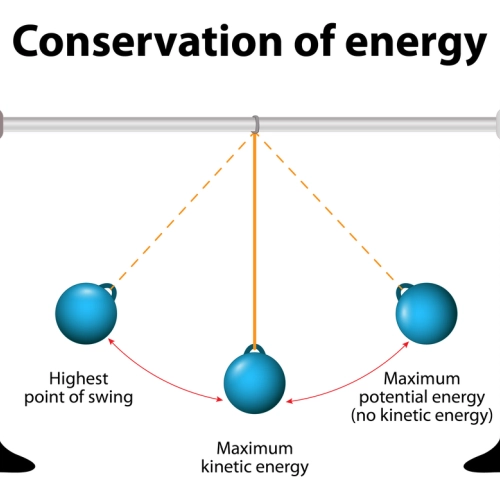
Mechanical energy is a fundamental concept in physics that refers to the sum of the kinetic energy and potential energy of an object. In the case of a pendulum, this mechanical energy is conserved, meaning that its total amount remains constant if there is no friction or other external forces acting on it.
Let's explore how this works in a pendulum.
What is a pendulum?
A pendulum is an object that hangs from a fixed point and can swing back and forth under the influence of gravity. The simplest example is a weight (called a bob) tied to the end of a rope or rod. When the pendulum is moved away from its equilibrium position and then released, it begins to move from side to side in an oscillating motion.
Type of movement in kinematics
The movement of a pendulum is studied in kinematics. It is an oscillatory movement that describes simple harmonic motion (MAS) when the oscillations are small.
This movement is characterized by being periodic, that is, it repeats itself at regular intervals of time. In each swing, the pendulum moves from its equilibrium position to one end, back to the other end, and back to the starting point. The restoring force, which is proportional to the displacement, and the acceleration are maximum at the extremes and zero in the equilibrium position.
For larger amplitudes, the movement is more complex and not perfectly harmonious.
Examples of pendulum applications
Pendulums have various practical and scientific applications.
For example, in pendulum clocks, they are used to maintain accurate time due to their regular movement. They are also used in seismographs to detect and measure earthquakes. In geology, they are used for gravimetric studies, determining variations in Earth's gravity. In addition, Foucault pendulums demonstrate the rotation of the Earth among the many applications it can have.
Types of energy in a pendulum

In a moving pendulum, there are two main types of mechanical energy:
- Kinetic energy (KE): It is the energy associated with the movement of the pendulum. The faster the pendulum moves, the greater its kinetic energy.
- Gravitational potential energy (PE): It is the energy stored due to the height of the pendulum. The higher the pendulum is, the greater its potential energy.
Formulas and energy exchange
When the pendulum moves, there is a constant exchange between kinetic energy and potential energy:
- Highest point of the swing: At this point, the pendulum is momentarily stopped before changing direction. Here, all mechanical energy is potential energy. The formula for potential energy is:
EP=m⋅g⋅h
Where:
- m is the mass of the bob.
- g is the acceleration due to gravity (approximately 9.8 m/s^2).
- h is the height of the bob with respect to the lowest point of its trajectory.
- Lowest point of swing: Here, the pendulum moves at its maximum speed. All mechanical energy is kinetic energy. The formula for kinetic energy is:
EC=(1/2)⋅m⋅v^2
Where:- v is the speed of the bob.
- Intermediate points: At every other point in the swing, the pendulum has a combination of kinetic energy and potential energy. The sum of both energies at any point is equal to the total mechanical energy of the system.
Energy conservation
The law of conservation of energy states that in a closed, frictionless system, the total energy remains constant. For an ideal pendulum (no friction or air resistance), this means that:
Initial EP + Initial EC = Final EP + Final EC
In other words, the total mechanical energy (the sum of potential and kinetic energy) does not change as the pendulum swings.
Factors affecting energy
In the real world, friction and air resistance cause the total mechanical energy to decrease over time, which eventually stops the pendulum. In a real pendulum, some of the mechanical energy is transformed into heat due to friction at the suspension point and air resistance.